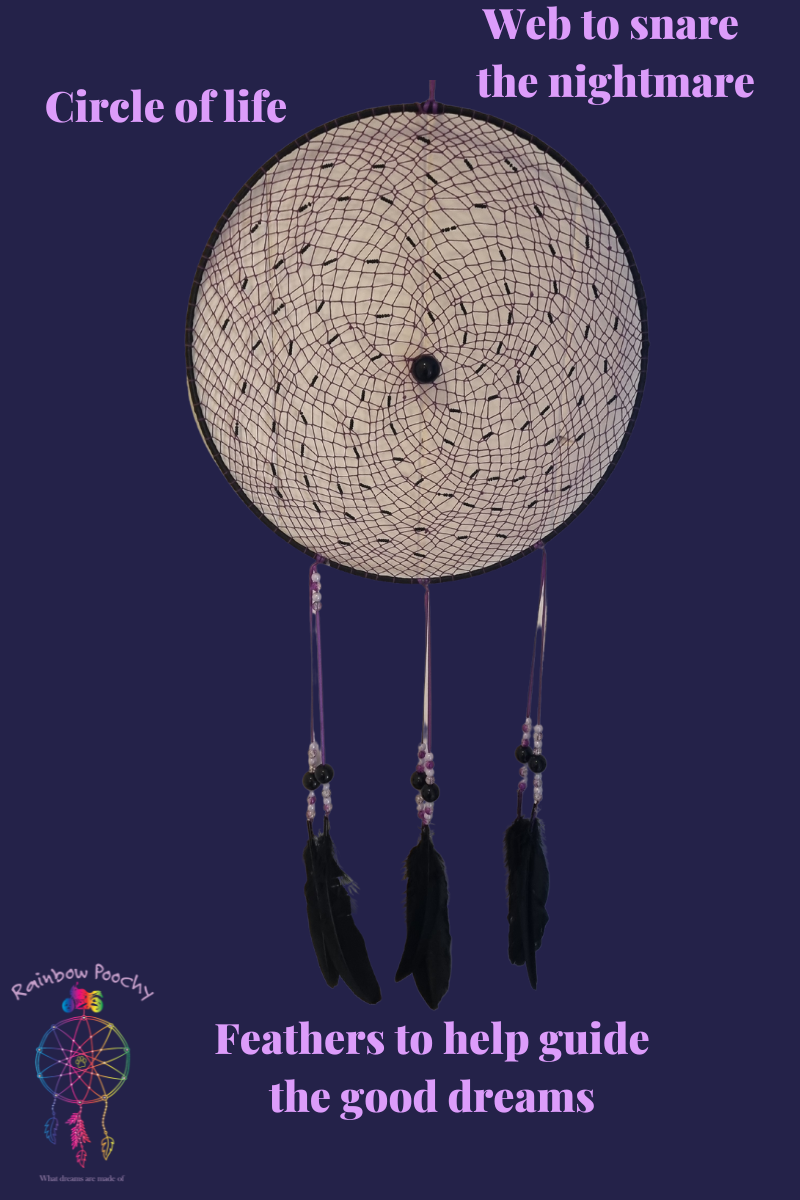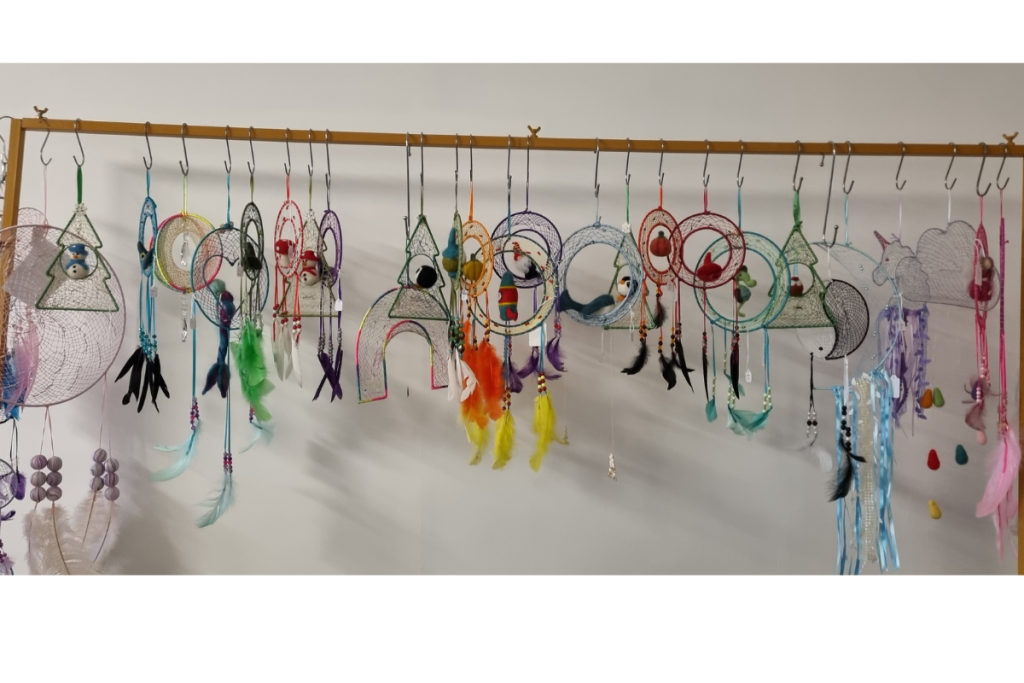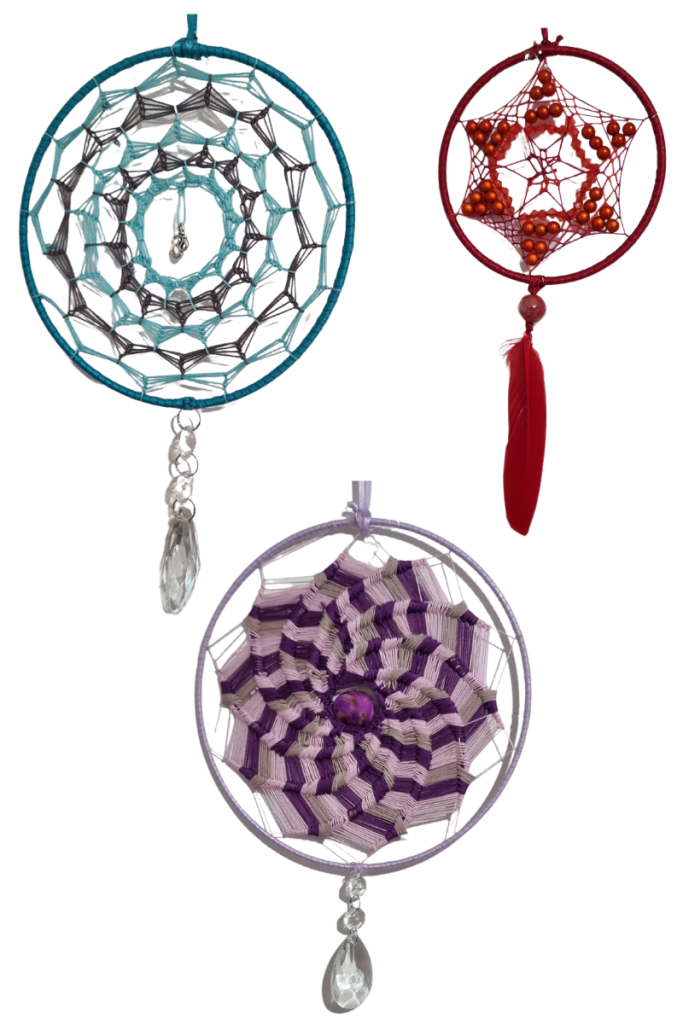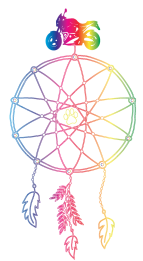A BRIEF HISTORY
The original dream catcher is said to come from the Ojibwa tribe based in Canada. The language of this tribe is Ojibwemowin but fluent speakers are declining. They are also part of the council of the three fires along side Odawa and Potawatomi peoples.
The dream catcher is used to protect “the sleeping ones” from bad dreams and is normally hung over their cradles.
Original dream catchers are traditionally made using a willow hoop, leather for tails, shells and feathers. Each part has its own meaning which is important to its history
and beliefs.
THE HOOP is the never ending circle of life
THE WEB is from the spiders web to catch the nightmares and the gaps provide space for the good dreams to come through when the day light hits the web it cleanses it of all
the bad dreams caught in the web.
THE FEATHERS on the tails help guide the good dreams to the sleeping one
THE BEADS represent the spider who taught us to web

The idea is so that when hanging in the tepee/hut/over cradle is that the web can catch all the bad dreams as they pass by in the wind and trap them and the tails and feathers will guide the good dreams down to the sleeping ones. Other than hanging over your bed you can also hang them at entry points to your home for protection against negative energy, like a tailsman. It is also said it best to hang it in an east or south direction
In giving a handmade dream catcher it is said to show the receiver you care about their piece of mind. Be sure, when gifting, to pass on one of the stories to show the significance of the gift. How ever when you shop with Rainbow Poochy the story part is covered by us as each one of our dream catchers. comes with a dream catcher fable.
The dream catcher became widely recognised during the pan-Indian movement in the 1960s and 70s an over time has spread outside of its original tribe through integration marriage or trade. The dream catcher has be come a symbol of native American culture although it has a lot of controversy around people appropriating it rather then apricating its origin and culture ( this however, is whole different topic completely and one to be explored and explained in a different blog).
Dream catchers are traditionally made by mothers, grandmothers and aunties in a tribe setting it is the mothers blessing to her child, just like the protector the spider woman passed down her skill of weaving a web to the ladies of the tribes when Asibaikasshi (spider woman) was finding difficult to make the webs for all the children and infants in her care once the tribe began to grow an spread across regions. Asibaikasshi passed her gift down to the mothers of the tribe to make the dream catchers for their children and protect them, this skill was then passed through generations from mother to daughter an so forth making the art of dream catcher making an ancient craft.
In today’s society on average 17 million dream catchers are sold each year. After the commercial flood of dream catchers in the 1990s you can now also find dream catchers on stickers, jewellery, notebooks, imagery, birthday cards and much more. Dream catchers fill a lot of requirements when purchasing gifts, they are small, non-perishable, portable, hand crafted and affordable.

In more recent years more fashionable dream catchers have been based on the Asian mandalas bringing a more geometric look and style to the dream catcher. The same goes with making them in this way they are very measured and have a set pattern. Macramé is also a trending style of dream catcher in recent years making stunning tree of life designs and intricate designs made by knotting cord. unlike more traditional dream catchers mandala and macramé are very set in design where as the traditional dream catcher is more free flowing when you are making them.

